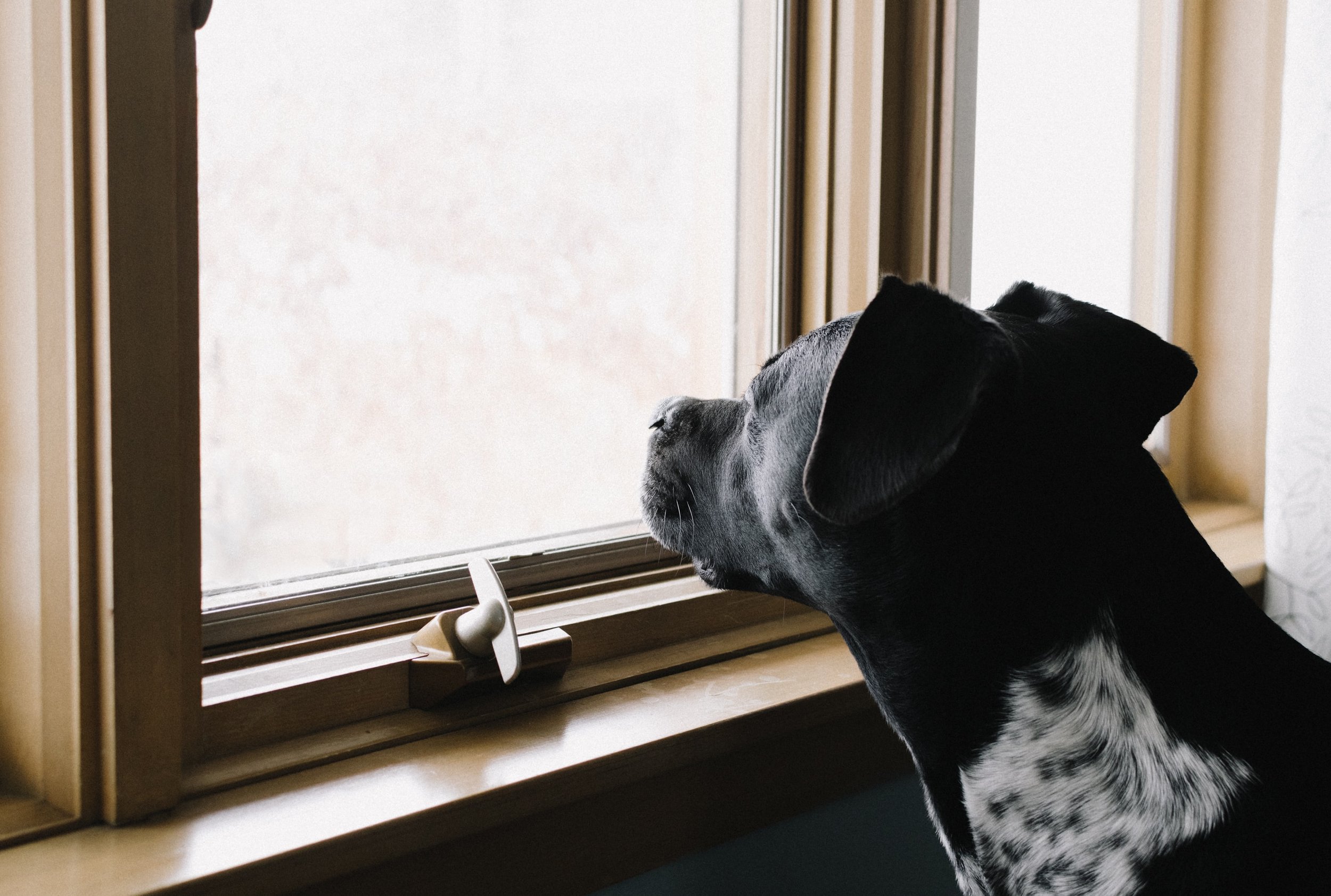Important to Know: Separation Anxiety in Dogs
On the 12th July Mandy Rigby, from Yes! Good Dog Behaviourist and Separation anxiety specialist, came to present to the team about how vets and behaviourists work together to help resolve the growing issue. We thought it was so helpful we wanted to share the key points with our community!
Separation anxiety (SA) is a condition that is being increasingly recognised in pets, with it now being the second most recorded behaviour disorder after aggression. With an estimated 20% of the dog population suffering from separation anxiety, it has become the most common reason for dogs being rehomed. This highlights the enormous impact separation anxiety can be have both to the pet affected, and their owners.
Key Points:
Separation anxiety is affecting an estimated 20% of the dog population
Sudden changes in routine, or circumstance can trigger the anxiety
An accurate diagnosis and support from a canine behaviourist are critical in resolving SA
Medication is not to be seen as a last resort, but a helpful intervention when working with a behaviourist
It takes time to resolve separation anxiety, some dogs are quick, and others are not, this all depends on individuals
The solution requires a collaborative approach, vet, behaviourist and owner! We are all here to help!
What triggers Separation Anxiety?
What triggers separation anxiety is not yet clear. Despite this, we do know that certain environmental factors are linked to a higher risk of developing separation anxiety. A sharp increase in separation anxiety related behavioural problems have been noted as a consequence of the sudden change in routines and circumstances brought about by COVID-19. The most notable being on our working patterns and family dynamics. Below are some of the key reasons we see increased anxiety:
Puppies separated from their litter before 60 days of age
Dogs being male
A home with no children
Dogs kept in flats/apartments
Sudden change in household circumstances
Sudden change in routine
Excessive displays of meeting and leaving behaviours
What are the symptoms of separation anxiety?
The symptoms of separation anxiety generally highlight an underlying frustration. Frustration can be mistaken for separation anxiety and vice-versa. A notable difference between the two is that in separation anxiety, the behaviours are exacerbated when the owner is absent with peak of behaviour problems shortly after the owner has left, generally within 10 minutes, whilst in frustration, the behaviours get worse the longer the absence. The key symptoms include:
Excessive attachment to owner
Vocalisation
Destructive behaviour (such as scratching at doors, or tearing up toys)
Loss of toilet training in a house-trained pet
Repetitive behaviours, such as pacing and circling
Shivering and shaking
Self-trauma and over grooming
How is it treated?
It is important to know that the majority of dogs can, and will learn to accept alone periods. Despite this, at the point when we tend to diagnose and thus initiate treatment, the resolution may take several months and require a committed owner to resolve.
If you are concerned that your dog may have separation anxiety then book a consultation with us, or a behaviourist. We partner with the Yes! Good Dog community hub for those based in Sheldon and Solihull areas.
To medicate or not to medicate?
Some dogs need medication, and when used it can make the difference between success and failure. If medication is recommended, do not be worried that your pet will be “zombified”, we do not use sedation medication to help with anxiety!
The main choice of medications are those within the group of SSRIs, such as fluoxetine. These are commonly used in humans to manage depression, but the key action is that of increasing the release of dopamine so as to reduce fear, anxiety and improve general well-being.
Less direct therapies can be supported with Adaptil diffusers, or other neutraceuticals, but these tend to have less predictable impact on patients.
Our advice before prescribing any interventions is to ensure an accurate diagnosis and to recognise that severe anxiety cases will not have a quick fix. Central to the treatment is to have a consultation with a canine behaviourist to create a behaviour modification plan to work alongside the use of medication. Without such a plan, there is unlikely to be any long-term solution achieved.
What can I do?
Mandy highlighted that prevention is better than cure, and starting early in a dog’s life is important. Her top 5 pointers are:
Ensure your dog has a wider range of experiences in life. The most critical period is when they are young, between 5 months and 10 months of age
Have a stable routine where possible. Try to avoid prolonged periods of absence, or counterintuitively, at home. Use a doggy-day-care, dog walkers, or house sitters if needed. The Yes! Good Dog is a great resource to look at for this.
Avoid punishment and utilise reward-based training. Avoid rewarding attention seeking behaviours!
Fulfil your dog’s needs 30 mins before leaving. This can include feeding, walking, letting out for a toilet break etc.
When coming home, do not be over the top. Greet your pet but not in a way to excite excessively until they have settled with you.
If you have a problem, seek professional advice and book an appointment with us
Conclusion
Separation anxiety affects a lot of dogs. Support is available and we recommend a definitive diagnosis before trying to treat anything. Treatment is best done with the aid of a canine behaviourist with separation anxiety training experience and in conjunction with your vet team. This will allow medication to be prescribed if required to aid the behaviour modification. The majority of dogs affected will respond but it can take time, so be patient!




